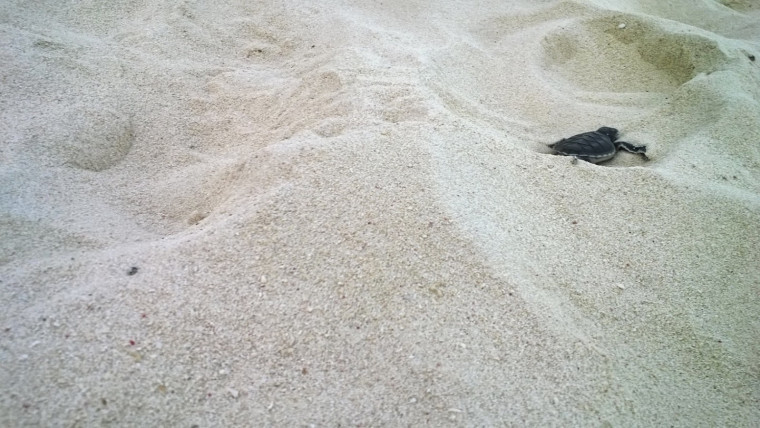Overseas and Off-Campus Programs Blog
Sea Turtle Scuttle
Open gallery

Author Name
Author Program
Program Semester and Year
Heron Island is the kind of destination I have seen on postcards but until I saw it with my own eyes and felt the coral sand under my own feet, I did not fully believe places like this existed. It is beautiful here, fascinating and lively. The water is so many shades of blue—aqua, azure, sapphire—there are not enough words in the English language to describe the color gradients our eyes are absorbing. The island and its surrounding reef are teeming with life. During sunset walks, I’ve watched packs of 10+ rays patrol the shallows, shark fins slice the water’s surface, and I’ve peered into the clear water to admire the sea cucumbers and other invertebrates on the sea floor. The pisonia forest on the interior of the island is dark and dank and humming with the sounds of thousands of noddy wings beating the air.
This week has been busy and intense; we’ve filled our days with lectures and multiple boat snorkel trips to the reef slope to collect field data. Friday was a perfect snorkel day with “glass-out” conditions and long-range visibility. The highlight was the second snorkel location, where we encountered at least eight full-grown green sea turtles. In lectures we learned that only one in a thousand turtle hatchlings survive to adulthood and saw evidence of those low odds each time we observed a nest erupt and watched every turtle plucked from the sand by sea gulls and ghost crabs, or thrashed in the water by black tip reef sharks. To observe turtle hatchlings erupt from the nest and instinctively scurry with such gusto, only to fall victim to the food chain three minutes later, is heartbreaking. But swimming with those big, old sea turtles felt so special, knowing they had overcome such an ordeal and thrived.
On Friday afternoon, students showed off their knowledge of marine ecology during the behavioral ecology of reef fish presentations. Becca, Allie, Jess, and Sierra studied cleaner wrasses and recorded the time each wrasse spent cleaning (eating parasites off) its “client” fish. Gabby, Seraphie, and Katherine were interested in the parrotfish’s role in shaping the reef. Those students quantified parrotfish feeding and estimated the amount of coral that parrotfish grind and pass, effectively turning the coral into sand as a byproduct of their algal diets. Lex, John, Claire, and Ian measured the degrees of territoriality of various species of damselfish. Shannon, Nicky, and Emma studied butterfly fish feeding habits, specifically whether or not butterfly fish preferred to eat certain coral forms over others. The projects were interesting and stimulating and gave everyone a greater appreciation of the tedious and difficult work marine biologists do in the field.
That night after another beautiful dinner cooked by Ulla, we zipped up our wetsuits over our full tummies and attached glow sticks to our snorkels to prepare for the long-awaited night snorkel. Our tutor, John, fearlessly led us through the harbor and onto the reef flat, where we observed bioluminescent plankton, squirrelfish, jellyfish, and loggerhead and green sea turtles. I found it eerie to compare the dark, seemingly quiet reef at night to the bustling, colorful reef during the day. I must admit, I felt a bit vulnerable out there at night. Rest assured, we all returned to dry land safely, with only a few jellyfish stings to complain about.
We spent so much time in the water that day that when I finally lay down to sleep, I felt a residual gentle swaying, as if I was still swimming among sea turtles, still floating above the Great Barrier Reef.
Overseas and Off-Campus Programs is located in room 206 of Albany Quadrangle on the Undergraduate Campus.
MSC: 11
email overseas@lclark.edu
voice 503-768-7295
fax 503-768-7300
Director Blythe Knott
Overseas and Off-Campus Programs
Lewis & Clark
615 S. Palatine Hill Road MSC 11
Portland OR 97219